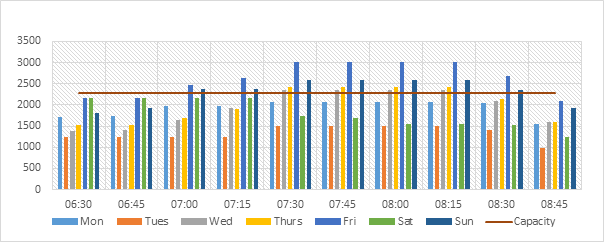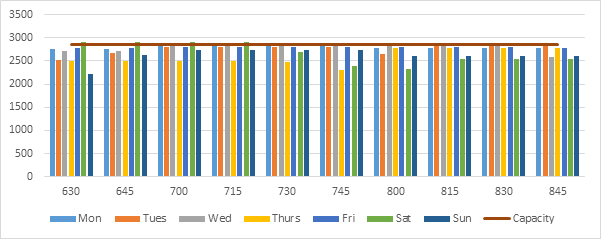Issue
London Heathrow has a desire to ensure every last ATM is utilised however only wishes to add more flights if it does not impact on performance at the airport. Resilience is driving many operational changes to ensure that delays and passenger experience is not compromised. One method of improving resilience is the spreading of flights across the day.
ACL Concept
ACL has the expertise and the data to analyse an airport schedule and suggest constraints on the runway, the terminal, parking and gates to help the airport and the airlines deliver a service to the planned schedule.
ACL recently provided analysis on the London Heathrow Airport schedule to evaluate the impact of introducing a 5 minute scheduling constraint to improve the spread of flights across each hour of the day. This included determining the probable number of moves by arrival and departure to achieve a five minute runway constraint which could then be used to determine the likely reduction in delay. Previously Heathrow had been coordinated with a runway ten minute offset constraint for over 20 years.
ACL was the innovator of this project, we were able to incorporate other stakeholder contributions to deliver a feasible schedule that utilised the five minute rnway constraint.
Part of the delivery involved demonstrating feasibility and forecasting probable outcomes. ACL also worked with the airport and NATS to demonstrate a reduced delay profile with the benefit of improved on time performance.
The work involved re-coordinating the historic baseline to the agreed new five minute constraint in advance of the SHL, this allowed airlines to accept or reject requested voluntary moves.
The final work involved Coordinating to the new constraint in summer 2016 and winter 2016/17.
Benefits
The new constraint produced an operationally deliverable schedule having removed infeasible periods of eight movements on arrival and eight departure movements in any given five minutes period.
The change has the potentially to reduce delays and stack holding with the added benefit of on time performance improvement for the airport infrastructure and the airlines schedules.
Process
All requested historic time moves by ACL within the five minute schedule were voluntary moves, Airlines had the right to refuse to move off their historic slot time due to their own commercial and connection requirements. The voluntary situation acknowledged that not all five minute overages would be eliminated in the first season using the new constraint. ACL worked closely with airlines to encourage acceptance of the suggested moves to ensure maximum impact.
Outcome
ACL eliminated eight movements in five minutes in one season, with the majority of five minute periods below the five movement level. There are a few minor periods of five minutes where six movements are scheduled. It is expected that over the next three equivalent seasons the overages will be reduced to the five movement per five minutes declared capacity.
The initiative will enable NATS/ Airport operations/ Airline operations/handling agents to have improved ability to deliver to the schedule plan.

